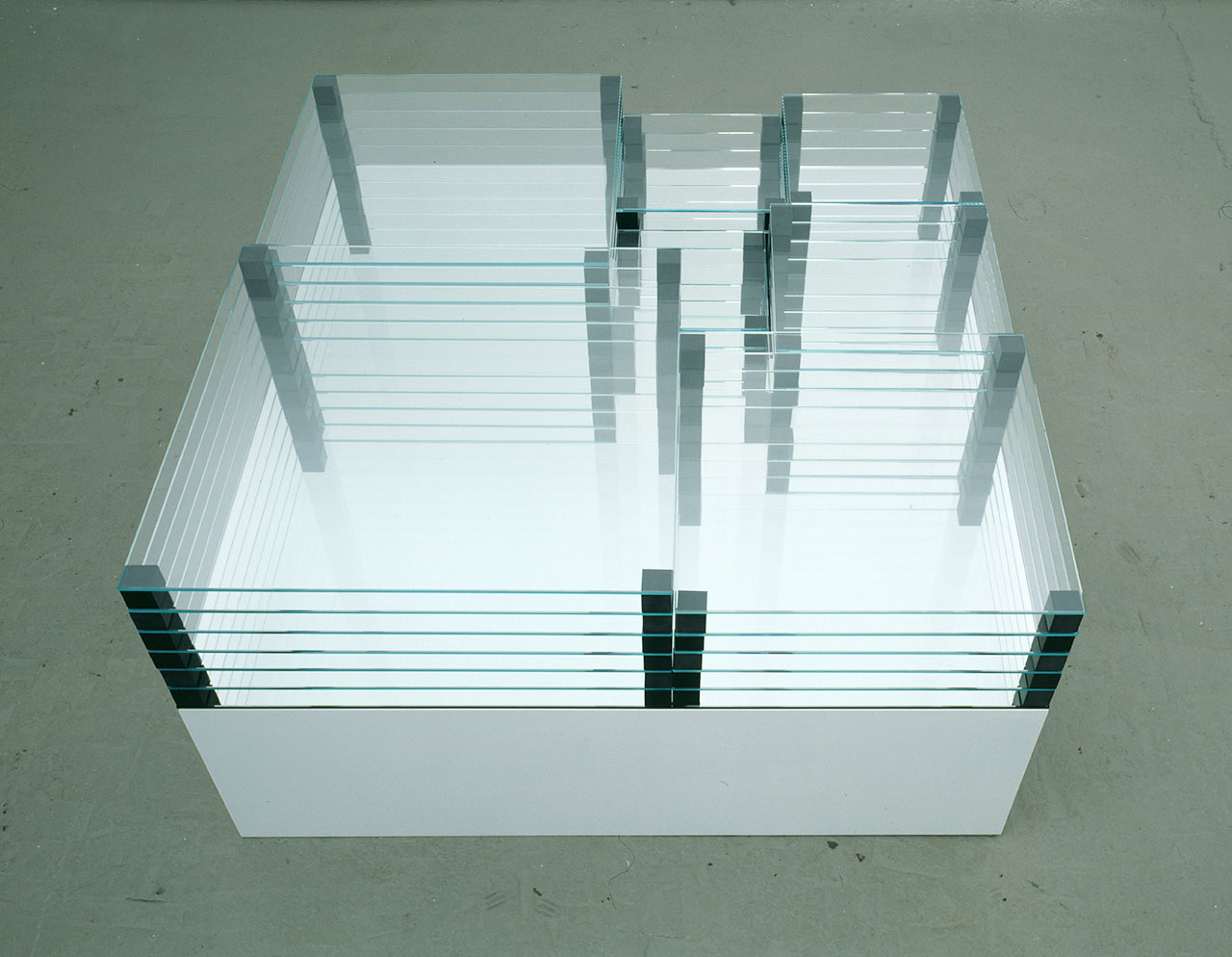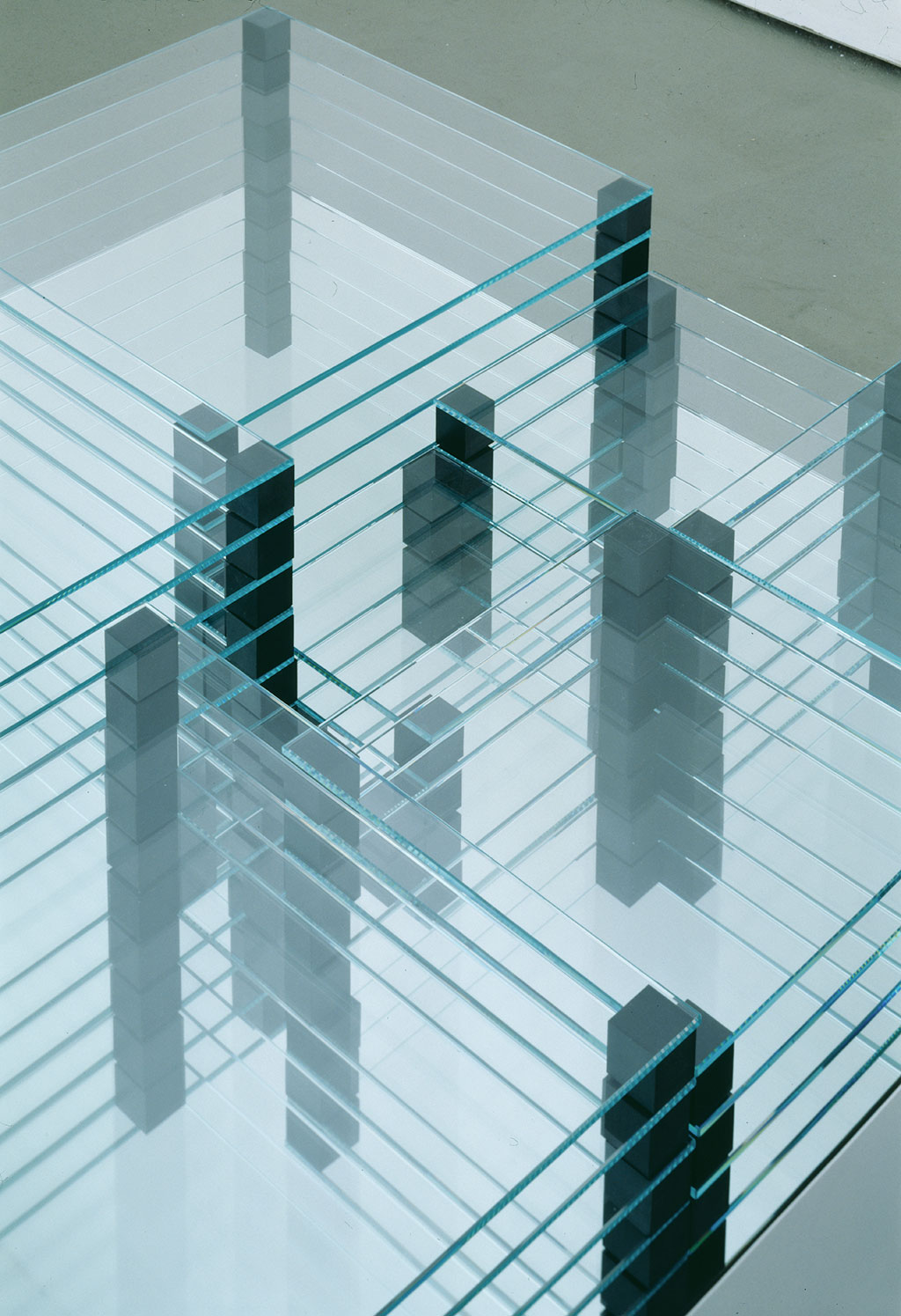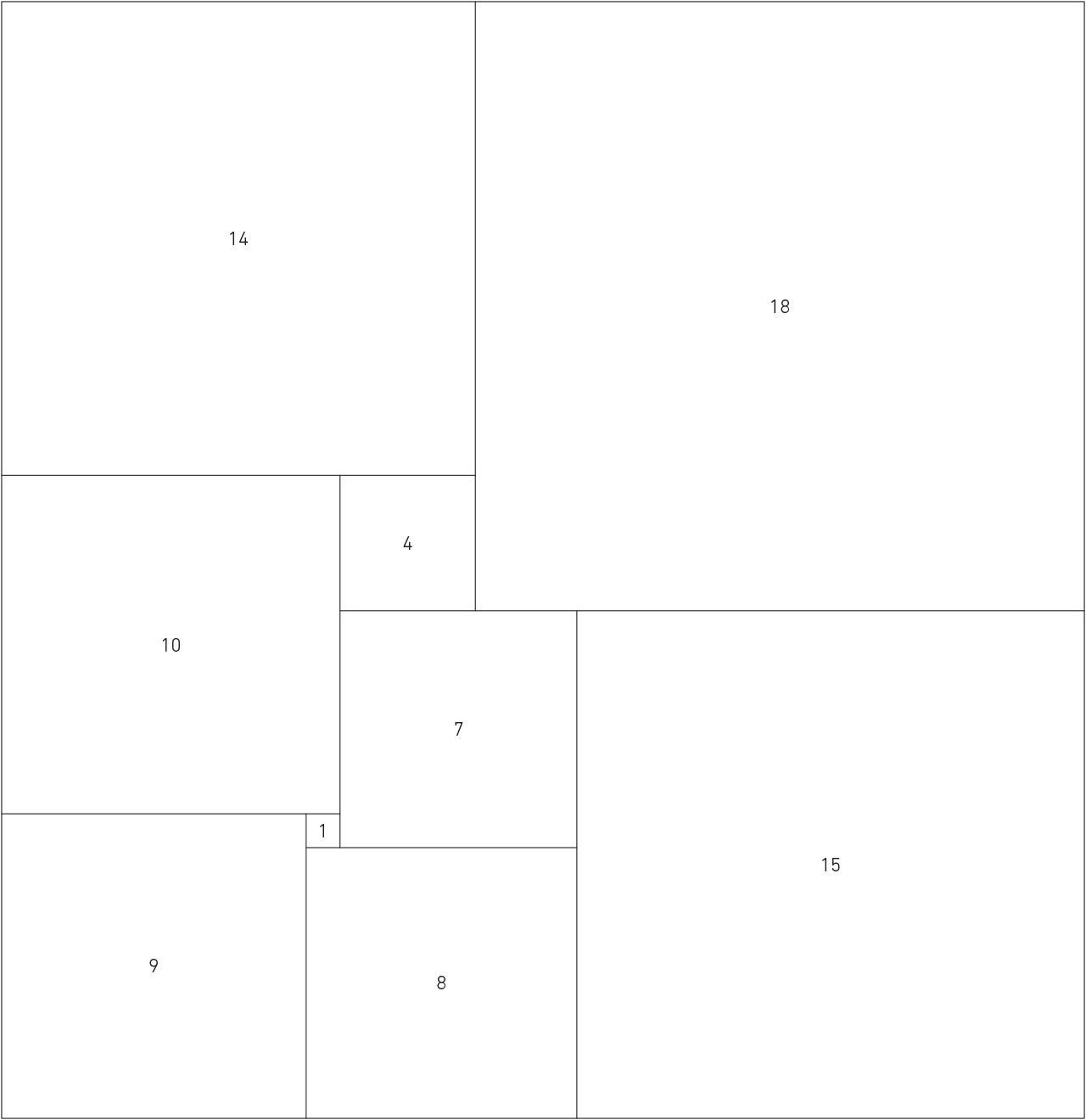the work perfect rectangle (2003) is a configuration of glass plates that follow the mathmatical principle of the "perfect square". this principle was discovered in 1978 by the russian mathematician a. j. w. duijvestijn and describes the division of a square into the smallest number of different smaller squares. the smallest number possible is 21, without any square being repeated.
this most simple division was executed by carsten nicolai in his work perfect square (2004). alternatively he has also done the work perfect rectangle, which has an aspect ratio of 33:32 (it is made of only 9 squares) and comes close to the square ideal thus being a perfect rectangle.
by the spiral layering of the glass plates (up to 6 on top of each other) an additional, complex visual structure occurs which elevates the composition to three dimensions. in its aesthetic form this composition of different layers of glass plates remind of computer storage media and captivates with its visual complexity and multifaceted reflections.


